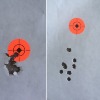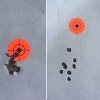adcoch1
Member
Hello all, I am thinking about a 223 bolt gun, and I can't seem to get a satisfactory answer to a few questions.
Question 1: what is the heaviest bullet that can be universally accurate in a 1:12 twist.
Question 2: what is the most accurate combination of twist to bullet weight.
So, I have owned several ar 15 rifles and carbines, all with 1:9 & 1:7 rifling. All have been impressive accuracy wise, but I have heard a lot about 1:10 and 1:12 guns being quite accurate in bolt guns. I am leaning towards believing that the high quality bullets in the 62-69 gr weight may just be more forgiving than other offerings. I've just started reloading for 223, so I want to get some solid data before i go shopping for a rifle.
So that's the back story, tell me about your experiences shooting the 223, and lets try to keep it scientifically accurate, not just the usual "1:7 is the best" line i always hear, unless it's absolutely true. All my present 223 firearms ARE 1:7 btw...
Sent from my LGLS740 using Tapatalk
Question 1: what is the heaviest bullet that can be universally accurate in a 1:12 twist.
Question 2: what is the most accurate combination of twist to bullet weight.
So, I have owned several ar 15 rifles and carbines, all with 1:9 & 1:7 rifling. All have been impressive accuracy wise, but I have heard a lot about 1:10 and 1:12 guns being quite accurate in bolt guns. I am leaning towards believing that the high quality bullets in the 62-69 gr weight may just be more forgiving than other offerings. I've just started reloading for 223, so I want to get some solid data before i go shopping for a rifle.
So that's the back story, tell me about your experiences shooting the 223, and lets try to keep it scientifically accurate, not just the usual "1:7 is the best" line i always hear, unless it's absolutely true. All my present 223 firearms ARE 1:7 btw...
Sent from my LGLS740 using Tapatalk








